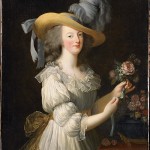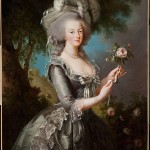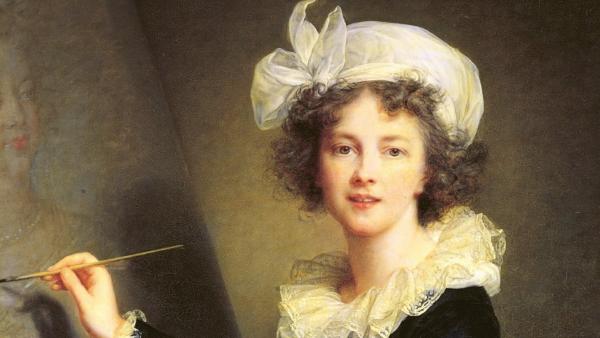 The odds were stacked against Élisabeth Vigée Le Brun, yet she became one of the most successful court portrait painters in France during the reign of Louis XVI. Many troubles would come her way during her life. But the worst may not have been the French Revolution, it may have been her husband.
The odds were stacked against Élisabeth Vigée Le Brun, yet she became one of the most successful court portrait painters in France during the reign of Louis XVI. Many troubles would come her way during her life. But the worst may not have been the French Revolution, it may have been her husband.
Born in Paris in 1755, Élisabeth Vigée demonstrated great artistic promise as as a young girl. Her father, a pastel artist himself, told her, “You will be a painter, my child, if ever there was one.” Still, her application to train at the painter’s guild was denied because she was a female (even though her father was a member). Forced to learn at home, she set herself on a course that mirrored academic training by copying plaster casts and engravings. While her father helped with lessons, her mother took her to exhibitions and acted as her chaperon when the young Élisabeth visited homes to work on portraits.
By the age of 19, she already had a successful career. Too successful — she attracted the attention of the local authorities, who closed her studio down because she was not a member of the artist’s guild. To make matters worse, after her father’s untimely death when she was 12, her mother had married a wealthy jeweler who collected the young artist’s fees and was not eager to share them with her.

Young Self-Portrait, c. 1782?
Vigée managed to gain admission to the painter’s guild after they unsuspectingly exhibited her paintings at their annual exhibition in 1774. By then, the daughter (whom her mother once thought homely) had become a beautiful young woman who attracted not only commissions but the attentions of many important people, including Jean Baptiste Pierre Lebrun, the most successful art dealer in Paris. Le Brun was one of the first dealers to sell artworks as investments and was an innovator in making art a much more international trade.
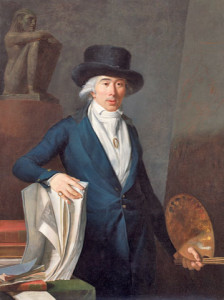
Jean-Baptiste Pierre Le Brun (1748-1813), Self-Portrait, Salon of 1795
According to Vigée, Le Brun invited her often to his mansion, which was filled with art. “I was enchanted at an opportunity of first hand acquaintance with…works of the great masters. M. Lebrun was so obliging as to lend me, for the purposes of copying some of his handsomest and most valuable paintings.”
To her surprise, in 1776, Le Brun asked her to marry him. Already a favorite portrait artist of Paris’s aristocratic women, she wondered if it was wise to give up the name by which she had become well known. But her home-life was becoming miserable. Her stepfather had retired, was becoming increasingly ill-tempered, and was hoarding her earnings.
Friends warned her against the match. A countess told her, “for heaven’s sake on no account marry M. Le Brun! You will be miserable if you do!” The court jeweler was blunter. “It would be better for you to tie a stone to your neck and jump in the river than to marry Le Brun.”
Unbeknownst to her friends, to escape her evil stepfather and with the encouragement of her mother, she was already secretly married. Le Brun showed her work in his shop and because of his excellent contacts, sales were good. Now as Madame Vigée Le Brun, the twenty-one year old was “showered” with commissions.Unfortunately, as she reported in her memoirs, “M. Le Brun soon got into the habit of pocketing my fees.” But greater fame lay ahead.
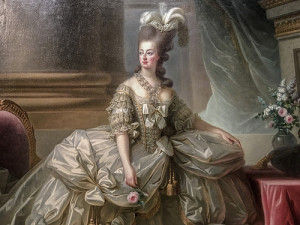
Detail of Marie Antoinette, 1778
In 1778, Queen Marie-Antoinette, who had heard of the young woman’s talents, invited Vigée Le Brun to the palace to paint her portrait. This would be the first of more than thirty. Of the same age as Marie-Antoinette and an excellent conversationalist, Vigée Lebrun became a favorite of the Queen and her circle. While the Queen’s reputation has forever been stained by the statement “let them eat cake” [despite there being no record of her ever saying this], Vigée Le Brun knew a very different woman. At one painting session while she was pregnant, the painter nervously dropped her brushes on the floor. The Queen stooped to the ground in full costume and insisted on picking them up herself. In 1783, Marie-Antoinette convinced her husband, Louis XVI, to sponsor Vigée Le Brun’s entrance to the Royal Academy. Élisabeth became one of only 14 women in the 550 person Academy. Even more significantly, she would later become the first woman Painter to the King in the history of France.
- Marie-Antoinette with Rose en chemise, 1773
- Marie-Antoinette with Rose, 1783
At Marie-Antoinette’s private chateau at Versailles, the Petit Trianon, the court women let down their hair, dropped their corsets and abandoned formal attire. For her first Salon (the annual exhibition of the Royal Academy), Vigée Le Brun, with the Queen’s enthusiastic consent, broke tradition by posing Her Majesty in comfortable, casual clothing. The daring painting scandalized the leaders of the Academy, who demanded she remove it. She complied with their ruling and, in only four weeks, it had been replaced with a formal portrait of her patroness.
Vigée Le Brun became the most popular painter of the Court’s women, only occasionally painting men. For the next six years, her studio poured out portraits of baronesses, countesses and their children. She lived “without anxiety as to the future, as she…earned a great deal of money.” But unbeknownst to her, her husband had a “furious passion for gambling [which] was at the bottom of the ruin of his fortune and my own.”
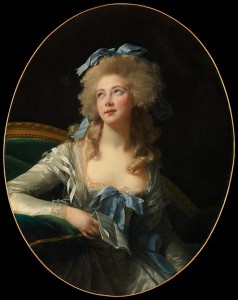
Madame Grand, 1783
When the Revolution began in 1789, Vigée Le Brun fled Paris with her daughter, leaving her husband behind. She was able to make the trip with some funds she earned from a portrait of one of the King’s courtiers. What happened to the fortune she had earned? “By the time I quitted France, I had not an income of twenty francs, although I had earned millions.” Her husband had “squandered it all.”
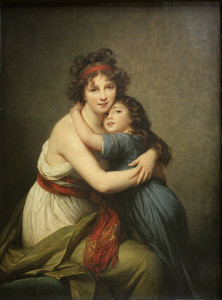
Self-portrait with Her Daughter, 1789
She would not return to France for 13 years. With her daughter, she shuttled between the Royal Courts of Europe, from Italy to Vienna to Saint Petersburg (via Prague, Dresden, and Berlin). Because of her great reputation and the family connections of the French aristocracy, Vigée Le Brun was able to continue her career in exile.
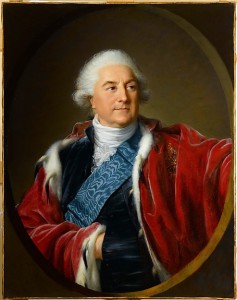
Stanislaw August Poniatowski, former King of Poland, 1797
In 1802, she finally returned and bought a country home not far from Versailles. As for M. Lebrun, he had stayed in Paris during the Revolution and later played a role (with the help of his friend Jacques Louis David) in the plan to convert the Palace into the new Musée Nationale, later the Musée du Napoleon, and what we know now as the Louvre. He wrote scholarly books on art and his research led to the rediscovery of the Dutch artist Jan Vermeer in the early19th century.
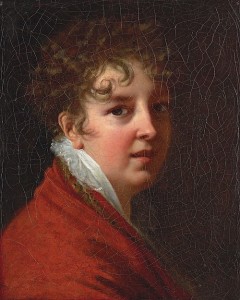
Self Portrait, c. 1809
But he lost his wife. In 1793, the revolutionary authorities insisted he divorce the traitorous favorite artist of the recently executed Queen. When Vigée Le Brun returned to France after years of supporting herself, she had no interest in reuniting with her ex-husband. She never married again and lived comfortably on her own to the age of 87.

